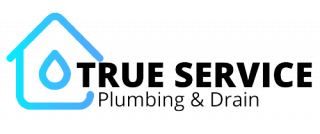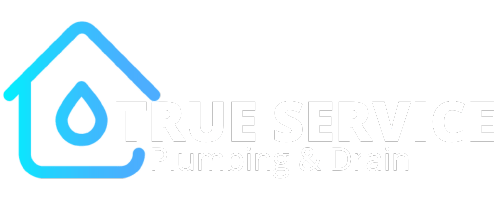Knowing what to do when a toilet bowl is clogged is essential for every homeowner, as a clogged toilet is one of the most common plumbing issues.
Acting quickly can save you from frustration, costly repairs, and potential water damage.
Whether it’s a minor blockage or a more severe issue, understanding the causes and solutions can help you handle the situation effectively.
In this guide, we’ll cover:
- The most common causes of toilet clogs
- Step-by-step methods to unclog a toilet
- When to call a plumber
- Tips to prevent future clogs
Let’s get started!
Common Causes of a Clogged Toilet
Understanding why toilets clog can help you prevent future problems.
Here are the top culprits:
- Excessive toilet paper use – Large amounts of toilet paper can create blockages, especially in low-flow toilets.
- Flushing non-flushable items – Items like baby wipes, paper towels, feminine hygiene products, and cotton swabs don’t break down properly.
- Low-flow toilet inefficiency – Older low-flow models may not have the power to clear waste efficiently.
- Mineral buildup from hard water – Over time, mineral deposits can restrict water flow, making it easier for clogs to form.
- Sewer line issues – If multiple drains are slow or backing up, the problem could be deeper in your plumbing system.
How to Unclog a Toilet (Step-by-Step DIY Methods)
When faced with a clogged toilet, don’t panic. Try these methods before calling a plumber.
Use a Plunger (Your First Line of Defense)
A plunger is the most effective tool for minor toilet clogs.
Follow these steps:
- Choose the right plunger – A flange plunger works best for toilets.
- Create a good seal – Place the plunger over the drain hole and press down firmly.
- Use strong, steady plunges – Push and pull for about 20-30 seconds.
- Check the flush – If water drains, the clog is cleared. If not, repeat the process.
Hot Water and Dish Soap Method
This method can help loosen minor clogs without the need for special tools.
- Pour dish soap into the bowl – About half a cup should do.
- Add hot (not boiling) water – Slowly pour a bucket of hot water into the bowl.
- Let it sit for a few minutes – The heat and soap can help break down the clog.
- Flush to test – If the water drains slowly, repeat the process.
H3: Baking Soda and Vinegar Solution
A natural and chemical-free way to break up minor clogs.
- Pour one cup of baking soda into the toilet.
- Add two cups of vinegar – The reaction will create fizzing.
- Wait 30 minutes – This gives the solution time to break down the clog.
- Flush and check – If needed, repeat the process.
Toilet Auger (For Stubborn Clogs)
If a plunger doesn’t work, a toilet auger (closet auger) can help.
- Insert the auger into the drain hole and crank it gently.
- Rotate and push forward to break up the blockage.
- Pull the auger back out and dispose of any debris.
- Flush to test – If the clog remains, repeat the process.
Wet/Dry Vacuum Method (For Advanced DIYers)
A wet/dry shop vacuum can be effective for tough clogs.
- Set the vacuum to liquid mode and remove the filter.
- Create a seal over the toilet drain using a towel.
- Turn the vacuum on and let it suck out the clog.
- Flush to confirm the toilet is clear.
When to Call a Professional Plumber
Sometimes, a clogged toilet is a sign of a more serious plumbing issue.
Here’s when to call a professional:
- Multiple clogged fixtures – If sinks, tubs, or other toilets are also slow, it could be a sewer line problem.
- Water rising dangerously high – If plunging doesn’t help and water keeps rising, stop using the toilet immediately.
- Frequent clogs – If your toilet clogs repeatedly, there may be an underlying issue like pipe obstructions or poor water pressure.
- Foul odors coming from drains – This can indicate a deeper blockage or sewer gas leaks.
- You’ve tried everything – If DIY methods don’t work, it’s time to call in an expert.
How to Prevent Future Toilet Clogs
Preventing clogs is easier than dealing with them.
Here’s how:
- Flush only toilet paper and waste – Avoid flushing anything else, even “flushable” wipes.
- Use less toilet paper – Excessive paper use can contribute to clogs.
- Regular maintenance – Cleaning the toilet and checking for slow drains can help spot issues early.
- Upgrade your toilet – If you have an older low-flow toilet, consider upgrading to a more efficient model.
- Install a drain guard – This helps catch debris before it becomes a problem.
Final Thoughts
Dealing with a clogged toilet doesn’t have to be stressful.
By understanding what to do when a toilet bowl is clogged, you can quickly address minor blockages and know when it’s time to call in a professional.
Simple preventative measures can also save you from future plumbing headaches.
Toilet Repair and Plumbing Services with True Service Plumbing
If you’re dealing with a stubborn clog, frequent backups, or suspect a deeper plumbing issue, True Service Plumbing is here to help.
We provide expert plumbing services in Toronto and the GTA for both residential and commercial properties.
Don’t let a clogged toilet disrupt your home or business.
Contact True Service Plumbing today for fast, reliable, and professional plumbing solutions.


